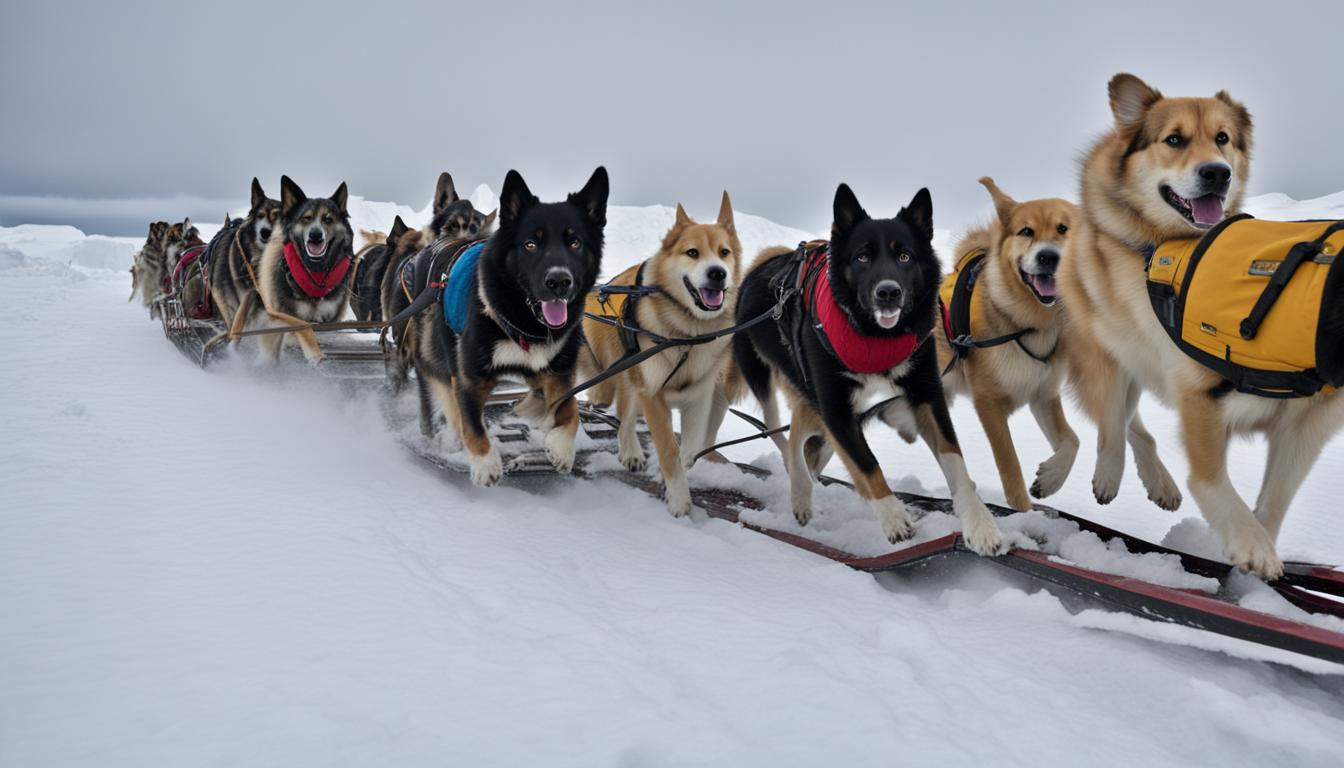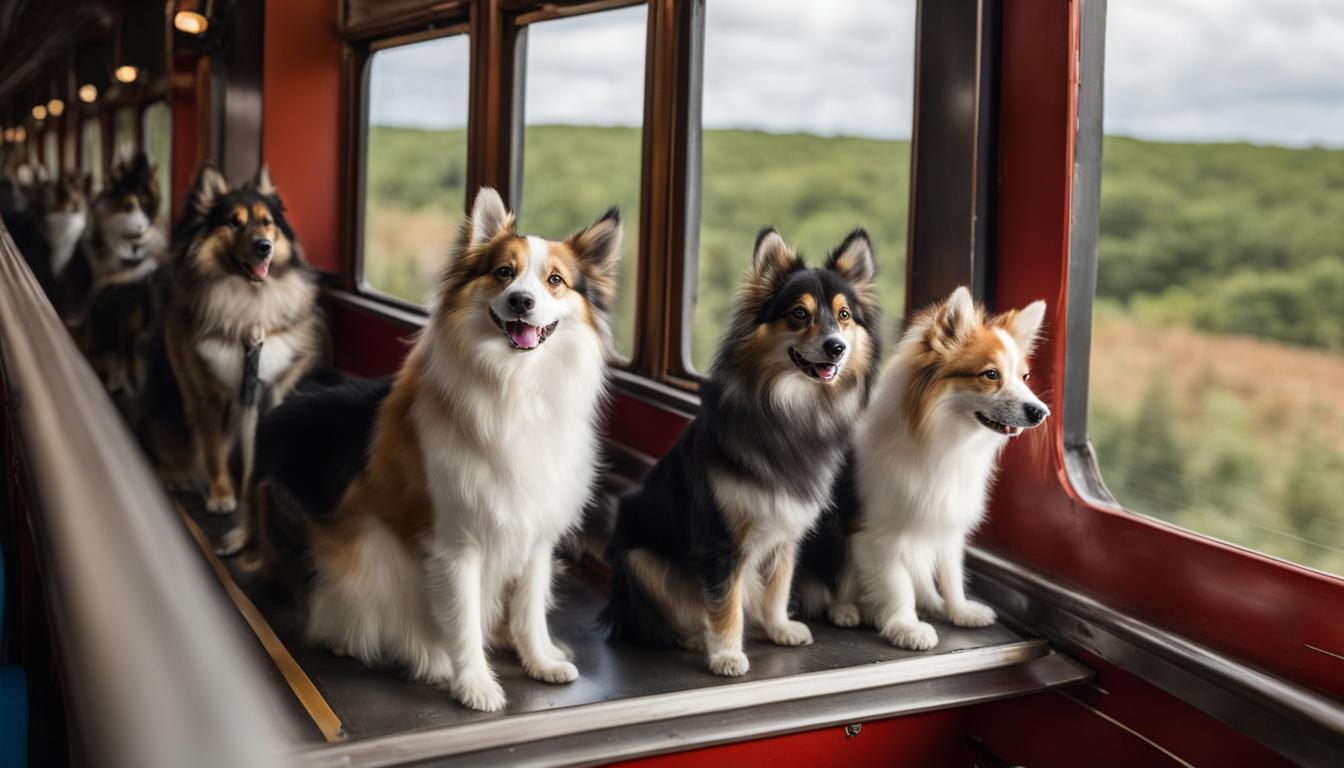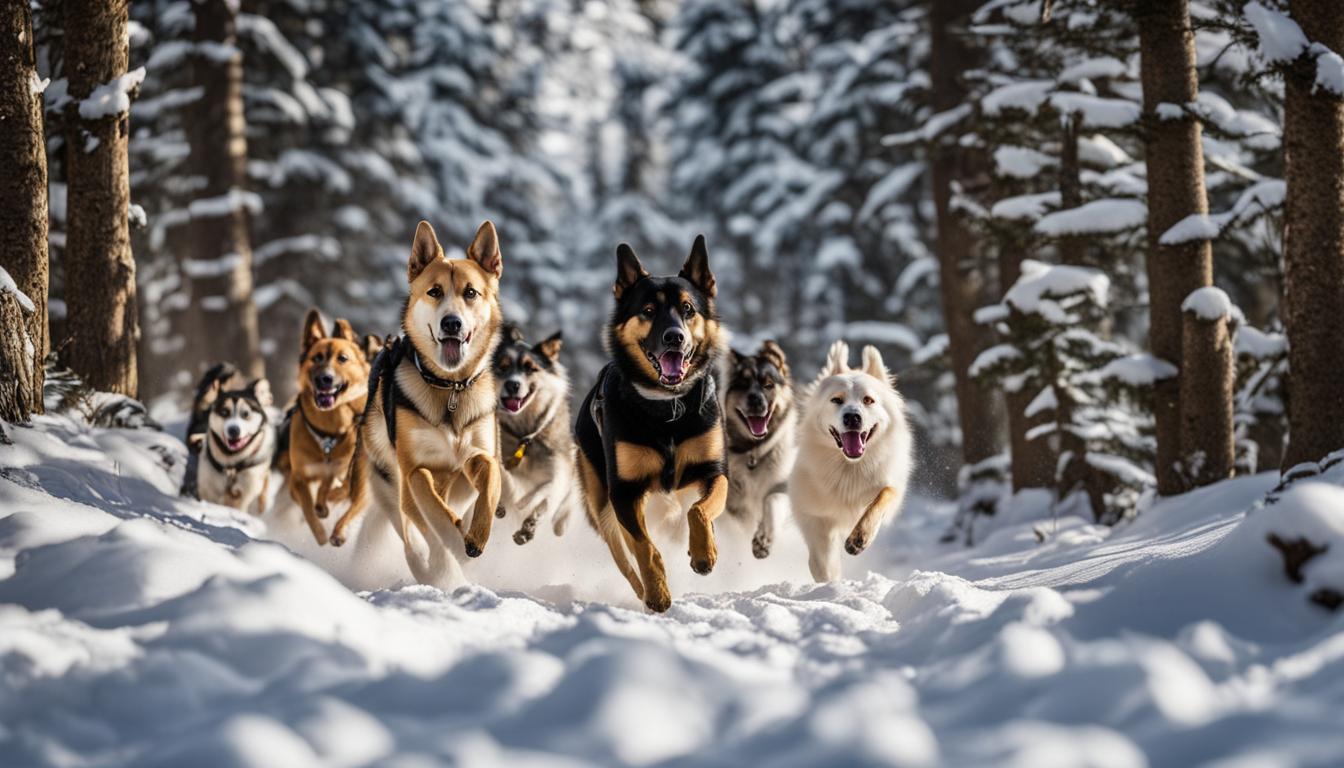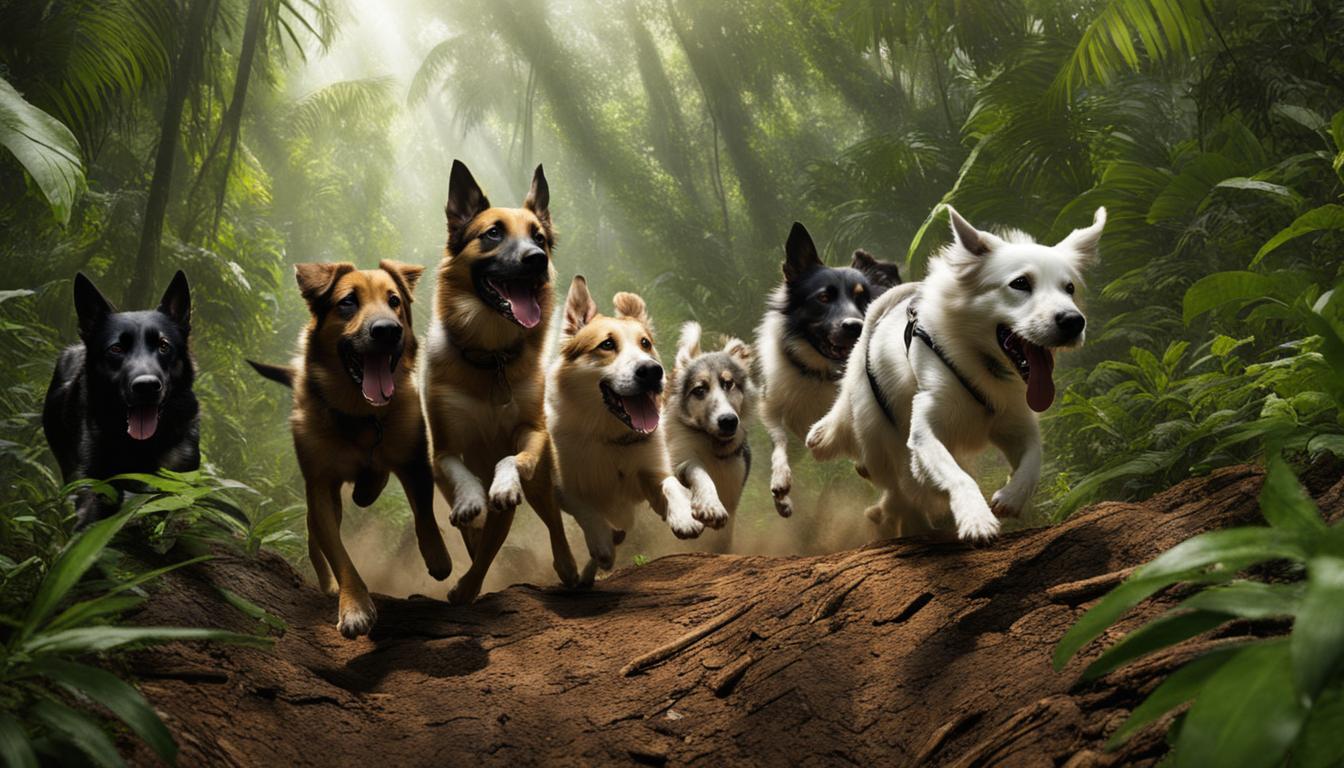Welcome to the fascinating world of Arctic exploration dogs, also known as sled dogs. These incredible canines have been the unsung heroes of polar expeditions and Arctic journeys, navigating the harshest terrains with unwavering spirit and boundless endurance. Prepare to embark on a journey through time as we explore the rich history of sled dogs, learn about the diverse breeds that have shaped civilizations in snow-clad regions, and uncover the pivotal role they play in Arctic exploration.
Key Takeaways:
- Arctic exploration dogs, or sled dogs, have been integral to polar expeditions and Arctic journeys.
- These remarkable animals possess endurance, resilience, and an unyielding spirit.
- Sled dogs have a rich history dating back thousands of years, originating from Mongolia.
- Prominent sled dog breeds include the Siberian Husky, Alaskan Malamute, Samoyed, and Chinook.
- The importance of sled dogs in Arctic exploration goes beyond transportation; they have become symbols of loyalty and companionship.
History of Sled Dog Breeds
Archaeological evidence suggests that sled dogs emerged in Mongolia around 35,000 to 30,000 years ago. These early ancestors of modern sled dog breeds were initially used for hunting and transportation during harsh winter conditions. The bond between humans and these remarkable animals was forged in the crucible of survival, where their strength and resilience helped early civilizations navigate the treacherous terrains of the Arctic and beyond.
As humans began to explore the Arctic regions, sled dogs became integral to their expeditions. The selective breeding of these dogs over time has resulted in contemporary sled dog breeds that possess exceptional traits such as strength, stamina, and endurance. The Siberian Husky, with its striking appearance and unwavering determination, is one of the most well-known sled dog breeds. The Alaskan Malamute, known for its power and durability, has also made its mark on the history of sled dogs. Other notable breeds include the Samoyed, with its gentle and friendly nature, and the Chinook, a breed bred specifically for sled dog racing.
The history of sled dog breeds is not only a testament to the adaptability and resilience of these animals, but also a reflection of the relationship between humans and dogs. The partnership between humans and sled dogs has been crucial in Arctic exploration, where these canine companions have helped transport supplies and navigate treacherous landscapes. Their unwavering loyalty and tireless work ethic have made sled dogs an indispensable asset in overcoming the challenges posed by the Arctic wilderness.
The Evolution of Sled Dog Breeds
Over the centuries, sled dog breeds have evolved to meet the specific demands of Arctic exploration and harsh, cold weather conditions. Through careful selective breeding, humans have honed these dogs’ skills and physical attributes, ensuring their ability to thrive in extreme environments. The evolving traits of sled dog breeds highlight the ingenuity and resourcefulness of humans in adapting to their surroundings and utilizing the remarkable capabilities of these remarkable animals.
As sled dog breeds continue to play a vital role in Arctic exploration and beyond, their history serves as a testament to the enduring spirit of teamwork between humans and animals. The legacy of sled dogs is not only one of physical strength and endurance, but also of the profound bond forged between humans and their faithful companions during the harshest of conditions.
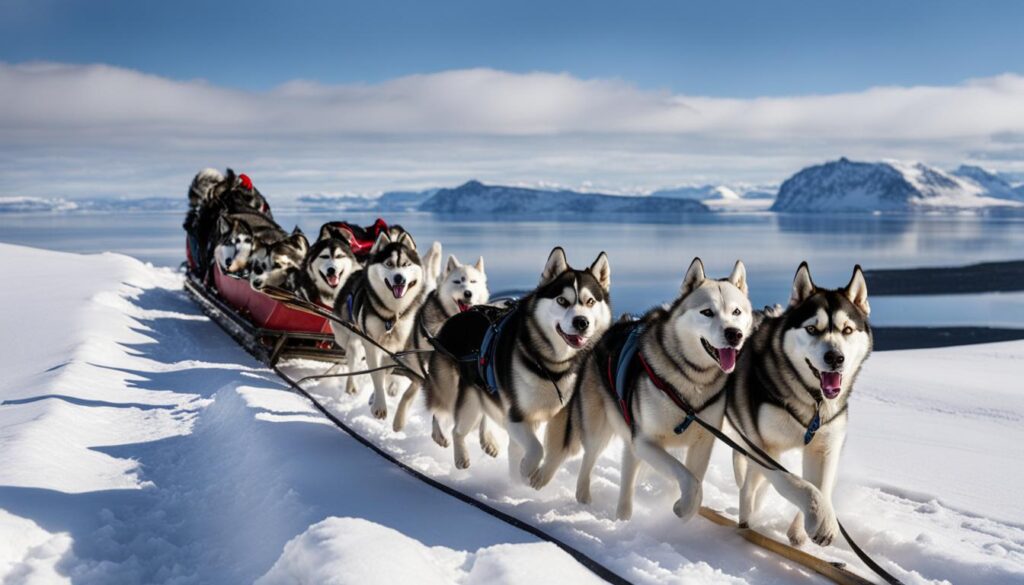
Sled Dog Breeds Comparison
| Breed | Origin | Appearance | Temperament |
|---|---|---|---|
| Siberian Husky | Siberia, Russia | Moderate size, thick coat. | Friendly, gentle, and independent. |
| Alaskan Malamute | Alaska, United States | Large, heavy build, thick coat. | Friendly, loyal, and strong-willed. |
| Samoyed | Siberia, Russia | Medium to large size, fluffy white coat. | Adaptable, friendly, and gentle. |
| Chinook | New Hampshire, United States | Medium to large size, short coat. | Friendly, gentle, and intelligent. |
Each sled dog breed has its own unique characteristics that have been finely honed over generations. These differences allow them to excel in specific tasks and environments. Whether it’s the Siberian Husky’s endurance in long-distance races or the Alaskan Malamute’s strength in heavy pulling, each breed contributes to the rich tapestry of sled dog history while showcasing the remarkable diversity of cold weather breeds.
The Importance of Sled Dogs in Arctic Exploration
When it comes to conquering the Arctic wilderness, there’s one group of heroes that has always emerged victorious – sled dogs. These incredible Arctic exploration dogs have been the backbone of polar expeditions for centuries, and their significance cannot be overstated.
Imagine navigating through treacherous icy terrains where human survival seems impossible. That’s where sled dogs come to the rescue. These working dogs possess an unparalleled resilience and strength, making them the ultimate companions in the harshest environments.
Not only were sled dogs used for transportation, but they also played a pivotal role in Arctic communication. In times when traditional methods failed, sled dogs were the lifeline that bridged vast distances. They ensured the delivery of supplies and mail to remote mining camps during the Alaskan Gold Rush, bringing hope and sustenance to isolated communities.
The bond between humans and sled dogs is truly remarkable. These loyal companions have been part of famous expeditions, like Roald Amundsen’s South Pole journey, where they showcased their reliability and tenacity over mechanized transport. Their endurance and speed were not only essential for survival but also celebrated in thrilling sled dog races that brought communities together.
FAQ
How long have sled dogs been in existence?
Archaeological evidence suggests that sled dogs emerged around 35,000 to 30,000 years ago in Mongolia.
What breeds are commonly used as sled dogs?
Prominent sled dog breeds include the Siberian Husky, Alaskan Malamute, Samoyed, and Chinook.
What role did sled dogs play in Arctic exploration?
Sled dogs were vital in Arctic exploration, serving as transportation and communication companions in harsh polar conditions.
Were sled dogs only used for transportation?
No, sled dogs also competed in sled dog races, showcasing their endurance and speed.
Can you give an example of a significant moment in sled dog history?
One significant moment was during the Alaskan Gold Rush when sled dogs transported vital supplies and mail to remote mining camps.
Were sled dogs utilized in famous expeditions?
Yes, sled dogs were part of famous expeditions such as Roald Amundsen’s South Pole expedition, where they proved their reliability and tenacity.
What does the history of sled dogs exemplify?
The history of sled dogs exemplifies the remarkable bond between humans and animals, showcasing their endurance, loyalty, and importance in Arctic civilizations.

